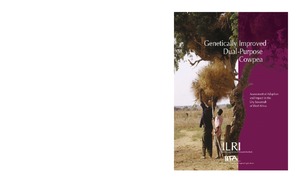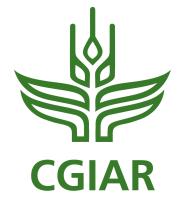Resource information
The research reported here has the potential for contributing to a real improvement in the livelihoods of mixed crop-livestock farming households in the dry savannah zone of West Africa through widespread uptake of improved dual-purpose cowpea (IDPC). This technology offers opportunities for the production of more, higher-quality food for poor people and fodder for animals, along with soil-fertility improvement and other social benefits. The study examines issues surrounding the adoption and impact of the new varieties and associated management strategies. A novel approach was taken, combining GIS, a crop model, and household, community and participatory research approaches in northern Nigeria in order to address the following questions: `What types of impact are expected and their magnitude, where is the impact most likely to be felt, and by whom?'. The results suggest that the research investment has been beneficial, and the expected returns are high. Furthermore, the steps taken in order to quantify the benefits versus the costs of this research have identified for researchers, policy makers and development practitioners important considerations and possibilities for speeding up and widening the impact of this technology. First, it is a flexible technology that is appreciated by, and will have the greatest impact on, farming households that are usually poor and living in remoter areas where improved crop and livestock production are especially critical to livelihood strategies. Although the wealthiest households are more likely to be adopters, poorer households have also taken up IDPC. As it is the poorer households that cultivate 75% of the arable land, the potential impact of extending the technology to these more rural, less market-oriented households is huge. Uptake to date has been more likely to occur near wholesale markets in the most densely populated areas. Thus, finding innovative ways to increase access to markets and provide improved seeds and information for farmers in low-population density areas may have potentially large payoffs. The benefit from investment in rural market infrastructure and roads will be reflected in increased uptake of natural-resource-enhancing technologies such as IDPC. Farmer-impact workshops were held and the results pointed towards environmental- and poverty-impact indicators that can be monitored as people experiment with, and adapt, the new varieties and associated management techniques. The study has highlighted opportunities relating to the identification of the benefits of IDPC for livestock which are likely to emerge when data from several years of ongoing integrated crop-livestock trials become available. Given the population, climatic and land-use changes that are likely to occur in West Africa in the coming decades, there is an onus on researchers to streamline the effectiveness of R&D activities so that they benefit the rapidly increasing numbers of poor people in the region. The lessons learnt from the impact assessment study reported here will have much broader applicability in the future than to cowpea research alone. It is hoped that this analysis provides a research and impact-assessment strategy that will be useful for other crops and technologies, and in particular that it provides guidelines for assessments of more integrated natural resource management strategies (including livestock) and technologies. Most importantly, the novel multidisciplinary, multicentre and participatory approaches taken by the cowpea research team are helping to close the researcher-farmer feedback loop. Ultimately this is what will lead to faster and more widespread adoption and impact of new technologies.



